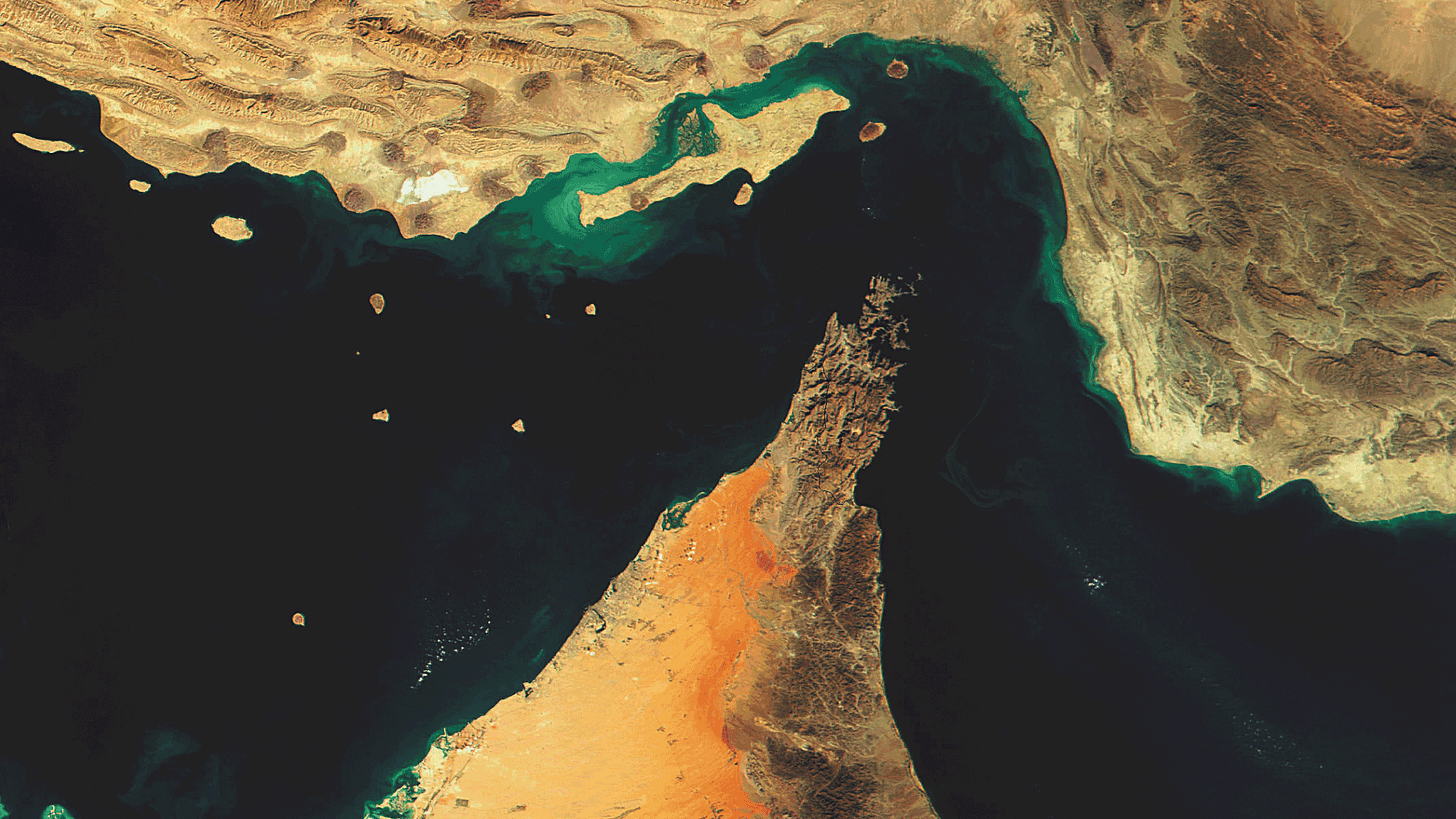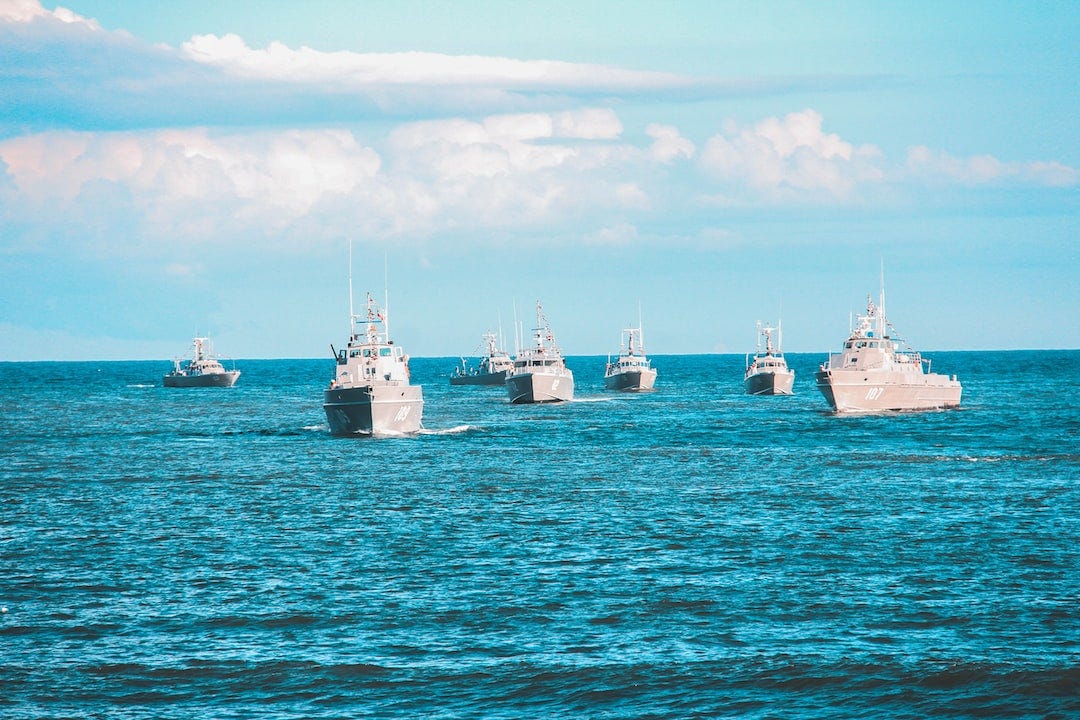Issues surrounding the Strait of Hormuz. Significance, Challenges and the Tanker Wars.

Geographical details:
The Strait of Hormuz is a strait between the Persian Gulf and the Gulf of Oman. It provides the only sea passage from the Persian Gulf to the open ocean and is one of the world's most strategically important choke points.
On the north coast lies Iran, and on the south coast the United Arab Emirates and Musandam, an exclave of Oman. The strait is about 90 nautical miles (167 km) long, with a width varying from about 52 nautical miles (96 km) to 21 nautical miles (39 km). A third of the world's liquefied natural gas and almost 25% of total global oil consumption passes through the strait, making it a highly important strategic location for international trade.
Strait of Hormuz, also called the Strait of Hormuz, channel linking the Persian Gulf (west) with the Gulf of Oman and the Arabian Sea (southeast). The strait is 35 to 60 miles (55 to 95 km) wide and separates Iran (north) from the Arabian Peninsula (south). It contains the islands of Qeshm (Qishm), Hormuz, and Hengām (Henjām) and is of great strategic and economic importance, especially as oil tankers collecting from various ports on the Persian Gulf must pass through the strait. In the mid-2010s one-fifth of the world’s oil supply passed through the strait, including about one-third of all seaborne trade. The strait also became important for the supply of liquefied natural gas (LNG), accounting for one-third of all LNG trade in the same period.
What is the Strait of Hormuz?
Despite its small size, the Strait of Hormuz is one of the world's most important shipping routes.
It is about 96 miles long and only 21 miles wide at its narrowest point, with shipping lanes in each direction just two miles wide.
Bounded to the north by Iran and to the south by Oman and the United Arab Emirates (UAE), the Strait of Hormuz connects the Gulf with the Arabian Sea.
How much oil goes through it?
About a fifth of the world's oil, nearly 21 million barrels a day, passed through the Strait of Hormuz last year. It carried about 19 million barrels a day - more than the 16 million barrels a day that went through the Strait of Malacca, a major international waterway in the Indian Ocean. In comparison, just five or six million barrels a day went via the Suez Canal and Bab el-Mandeb in the Red Sea.
The Strait of Hormuz is vital for the main oil exporters in the Gulf region, whose economies are built around oil and gas production.
💡
In 2018, Saudi Arabia sent nearly 6.4 million barrels of oil per day via the strait, while Iraq sent more than 3.4 million, the UAE nearly 2.7 million and Kuwait just over two million.
Iran also relies heavily on this route for its oil exports.
And Qatar, the biggest global producer of liquefied natural gas (LNG), exports nearly all its gas through the strait.
Conflict in the Strait of Hormuz
Iran diverted a British-flagged oil tanker to one of its ports, which the UK said was illegal
US forces destroyed an Iranian drone that came close to the USS Boxer
The US said it was ready to carry out air strikes after Iran shot down a US drone
Two tankers were damaged by explosions after leaving the Strait of Hormuz
Four tankers were hit by blasts within the UAE's territorial waters
Shipping and oil installation were targeted during the 1980s Iran-Iraq war.
The US has now beefed up its military presence in the region. But it has also said it is keen for other countries to play a part in safeguarding the Gulf and wider region.
And the UK is providing a naval escort for British-flagged ships passing through the Strait of Hormuz.
Tanker War
The anti-shipping campaigns during the Iran-Iraq War (1980-1988) are known as the Tanker War. In 1981, Iraq began attacks on ships to weaken Iran's ability to fight, initially attacking ships carrying military supplies to the groundwar front and later attacking ships carrying Iran's exports. Iran retaliated by attacking ships belonging to Iraq's trading partners and to countries that loaned Iraq money to support its war effort.
The first phase of the Tanker war began in May 1981, when Iraq declared that all ships going to or from Iranian ports in the northern zone of the Gulf were subject to attack. Iraq used its air power to enforce its threats, primarily Super Frelon helicopters, F-1 Mirage and MiG-23 fighters armed with Exocet anti-ship cruise missiles. Between 1981 and 1983, Iranian forces generally held their fire at sea. But in 1984 Iraq escalated its effort, marking the second phase of the Tanker War. The arrival of French Super-Etendard combat aircraft, also armed with Exocet missiles, offered the Iraqis more range
. Iran finally retaliated. Because Iran did not have many effective anti-ship cruise missiles during 1984-1986, it was forced to use creative tactics when targeting ships. For example, Iran used air-to-surface missiles intended to attack armored land vehicles, including Mavericks and AS 12s " much smaller targets than even relatively small ships. Anti-armor missiles are designed to penetrate thick plating on tanks, an irrelevant ability for attacks on ships. Iran's attacks caused little physical damage to ships, but successful hits on ships' accommodation areas sometimes killed or wounded crew, interrupting transits.
A partial chronology of the events:
October 7, 1980: Iraq declares that Gulf Water along the Iranian coast north of 29.03N is a prohibited war zone.
May 30, 1982: Atlas I, a Turkish oil tanker, becomes the first tanker to be hit during the war. While loading oil at Kharg Island, it is damaged by Iraqi bombs.
December 18, 1982: Greek tanker, Scapmount hit by an Iraqi Exocet, becomes the first tanker to become CTL in the Tanker War.
January, 1984: Iraqis escalate their naval war effort and Iran responds by beginning their naval war effort.
February 14, 1985: Neptunia, a Liberian tanker, was hit in the engine room by an Iraqi Exocet. The tanker sinks three days later due to an explosion, the first tanker to sink in the Tanker War.
November 1, 1986: Neutral Kuwait appeals to the international community to protect its shipping interests in the Gulf, resulting in the "re-flagging" of Kuwaiti tankers. The USSR is the first nation to respond, and the US leads the international effort in order to minimize the Soviet role in the Gulf.
March 7, 1987: The United States announces its decision to re-flag Kuwaiti tankers.
August 8, 1988: Iran and Iraq agree to a cease-fire.





